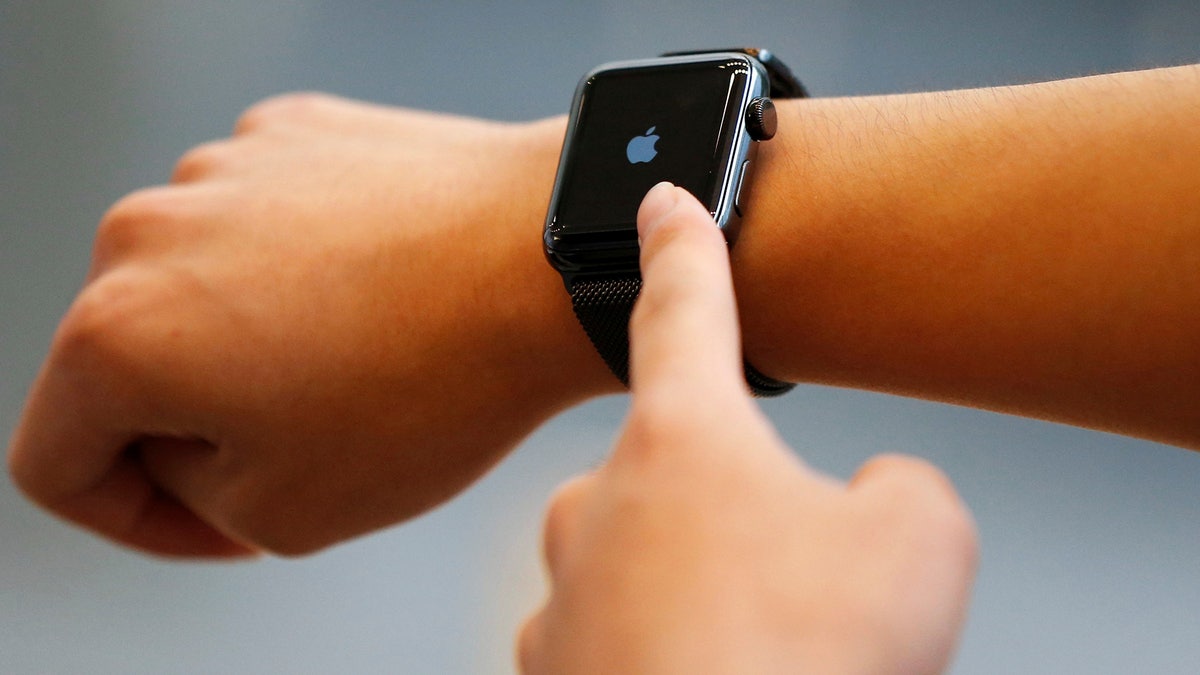
Daiki Shimizu tries an Apple Watch Series 2 after it went on sale at the Apple Store at Tokyo's Omotesando shopping district, Japan, September 16, 2016. (REUTERS/Issei Kato)
Fitness trackers worn on the wrist to record physical activity significantly overestimate calories burned, a new study suggests.
The least accurate device reported users had exerted up to twice as much energy as they really had.
But all seven models tested — including the Apple Watch, the Samsung Gear S2 and the Fitbit Surge — were “way off the mark."
8 LITTLE CHANGES THAT CAN LEAD TO WEIGHT LOSS
It means users may fail to achieve their target levels of exercise and struggle to lose weight as quickly as they expect.
Researchers from Stanford University, California, tested the trackers on 60 volunteers as they sat still, walked, ran and cycled.
The results, which were published in the Journal of Personalized Medicine were compared with a “gold standard," obtained using medical-grade equipment.
Six of the devices measured heart rate with an error rate of less than 5 percent, which the researchers considered acceptable.
FASTING DIET FOR WEIGHT LOSS ISN'T ALL IT'S CRACKED UP TO BE
But none measured energy expenditure accurately, with even the best performer being off by an average of 27 percent.
The worst — the PulseOn — was off by an average of 93 percent.
Devices reported the lowest error for cycling and the highest for walking.
Errors were also greater for men, people with a higher body mass index, and those with darker skin.
“The heart rate measurements performed far better than we expected but the energy expenditure measures were way off the mark," study author Anna Shcherbina said. “The magnitude of just how bad they were surprised me.”
FOLLOW US ON FACEBOOK FOR MORE FOX LIFESTYLE NEWS
The devices measure heart rate directly, but energy expenditure must be calculated using a combination of factors.
Each device uses its own algorithm to estimate calories burned.
“It’s very hard to train an algorithm that would be accurate across a wide variety of people because energy expenditure is variable based on someone’s fitness level, height and weight, etc," Shcherbina said.
The researchers cautioned against using the devices as part of health improvement programs and called for manufacturers to routinely test them against a set standard.





















